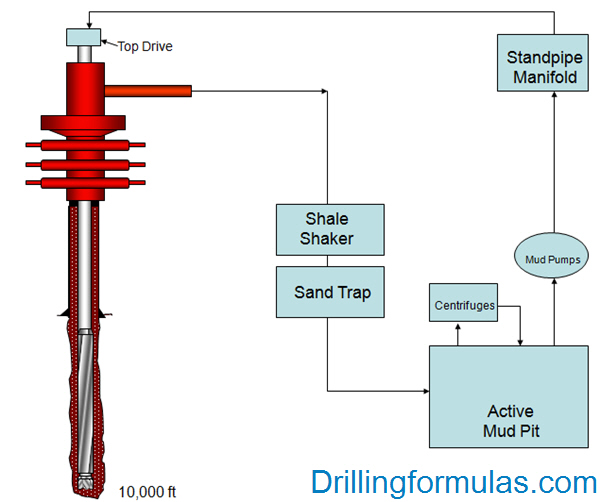Cement Bond Log: It measures integrity of cement bond between tubing/casing and well bore. The log is typically obtained from one of a variety of sonic-type tools. The newer versions, called “cement mapping”, can give detailed, 360-degree representations of the integrity of the cement job, whereas older versions may display a single line representing the integrated integrity around the casing (see Figure below).
Concept of CBL: Transmitter sends acoustic wave to casing/cement and then receivers receive acoustic signal that transfer through casing to cement and reflects to receivers. Acoustic wave at receivers is converted to amplitude (mv). Low amplitude represents good cement bond between casing and hole; however, high amplitude represents bad cement bond. The concept likes when we knock pipe. If there is something coverage around pipe, the reflection sound will be attenuated, and vice versa (see Figure below).

Tool component for CBL currently mostly consists of following equipment:
Gamma Ray/ CCL: It is used as correlation log. Gamma ray measures formation radiation and CCL records collar depth in tubing. Correlation log is a reference for a number of cased hole jobs as perforation, set plug, set patch, etc.
CBL/VDL: CBL measures cement bond integrity between casing/tubing and well bore. It apply concept of acoustic wave transferring through media. VDL is the top view of the cut away of upper part of acoustic wave that represents how cement bond from casing to wellbore
Caliper: Caliper measures wellbore diameter.
Example of CBL is shown below.

Downhole conditions that can cause errors in acoustic CBL interpretation or reliability are as follows:
Cement sheath thickness: Cement-sheath thickness may vary, causing changes in attenuation rate. The suitable cement thickness of 3/4 in. (2 cm) or more is required to achieve full attenuation.
Microannulus: A microannulus is a very small gap between casing and cement. This gap would affect the CBL presentation. Running the CBL under pressure can help eliminate the microannulus.
Centralize tool: Tool must be centralized in order to get the accurate amplitude and time.
Ref books:  Cementing Technology Books
Cementing Technology Books










 Cementing Technology Books
Cementing Technology Books


